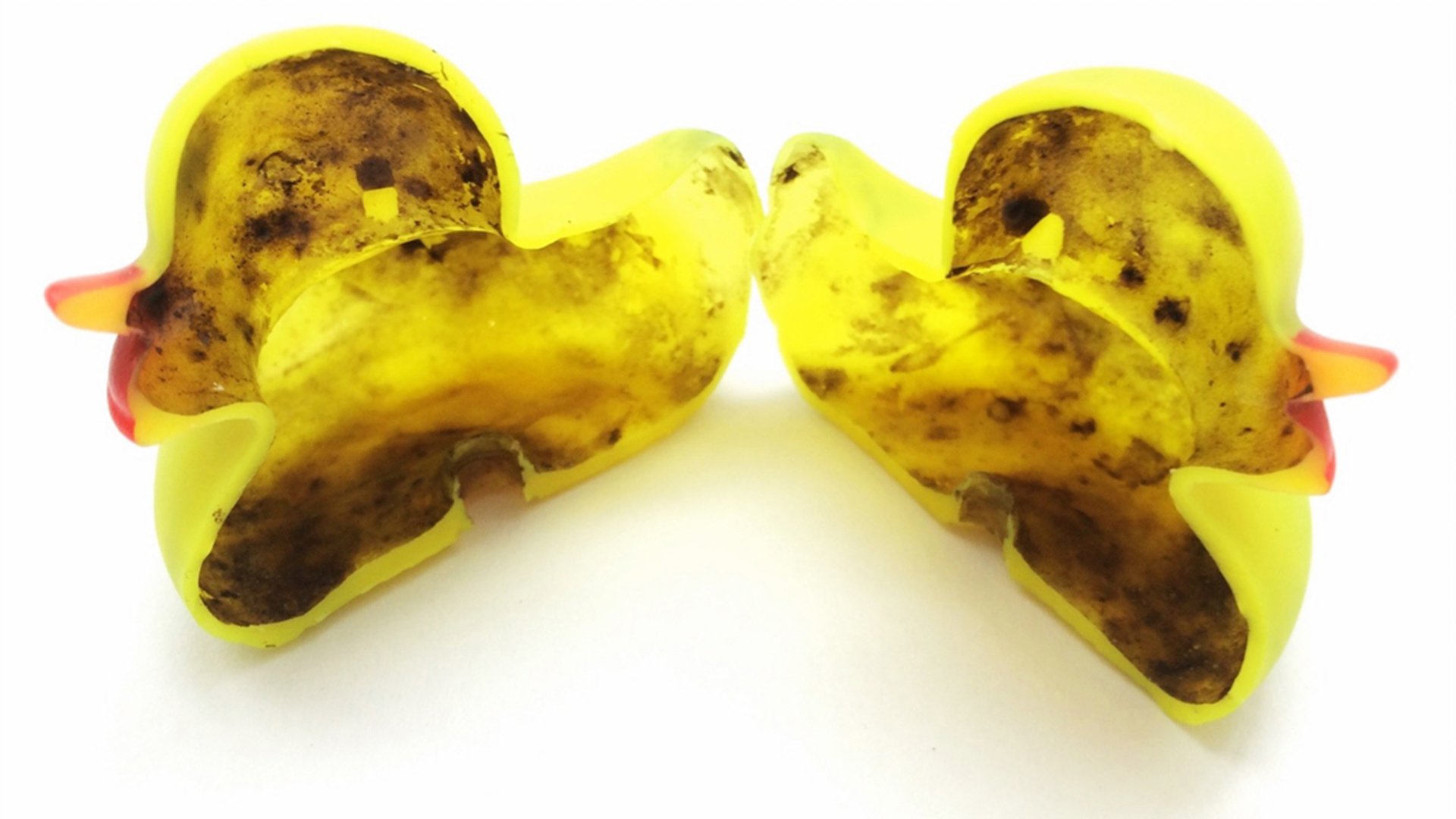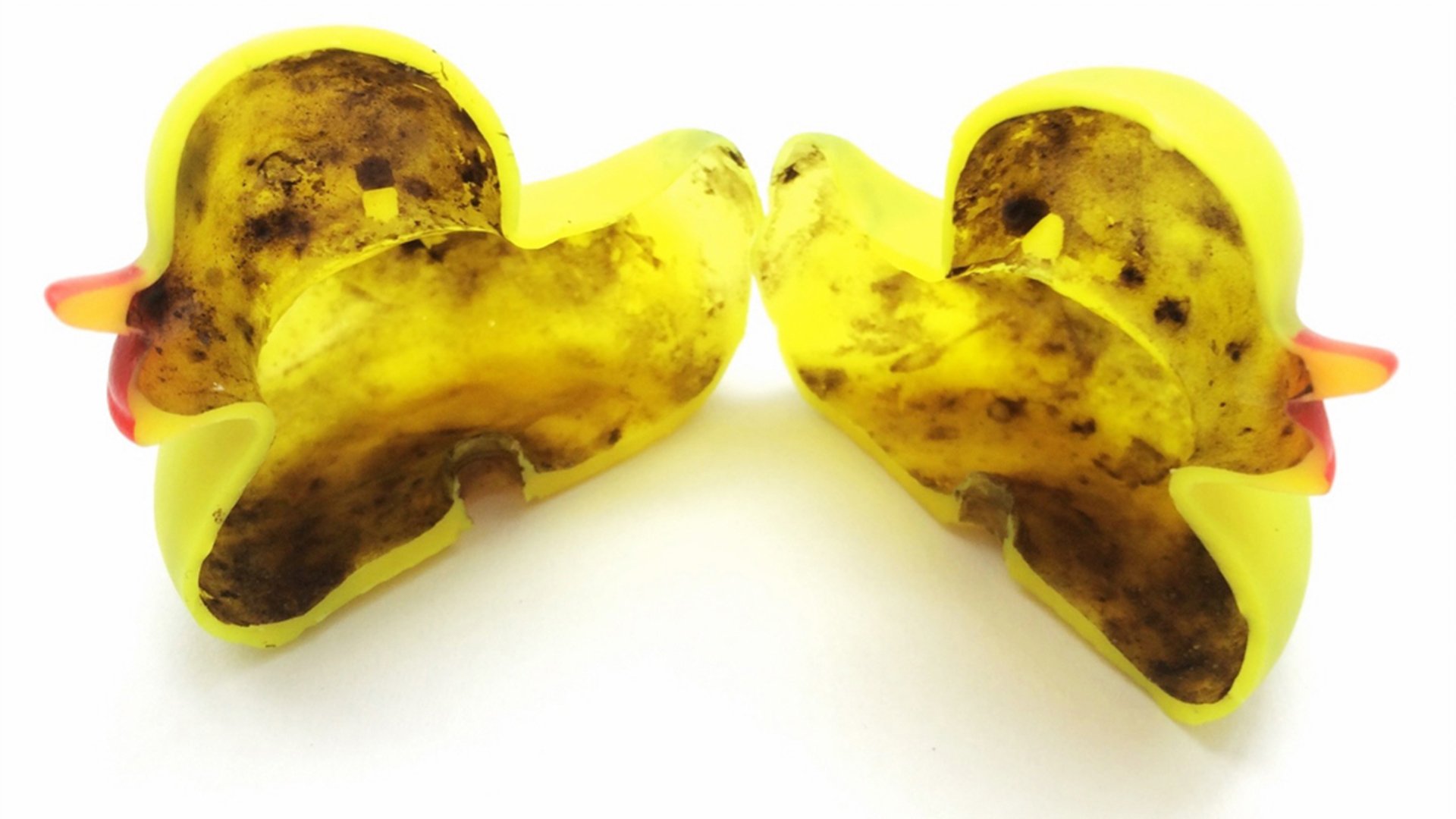Bath toys
The humid and warm atmosphere of bathrooms turns bath toys into perfect breeding grounds for what are referred to as biofilms. These are dense layers of fungi and bacteria , and can also be found on shower curtains in the form of a slimy coating. The researchers discovered that rubber ducks had such a microbial layer as well, and found between 5 and 75 million microbes per square centimetre inside of the toys. This is dense enough to be visible to the naked eye. Several potential pathogens were found as well, including Listeria, Legionella and the potentially multiple drug resistant Pseudomonas aeruginosa.
Growth medium
In itself, this is not a very shocking discovery, as bath toys are regularly exposed to soap, bodily fluids and bacteria. However, even bacteria that had only been in contact with clean water were found to have developed a biofilm, even though tap water contains barely any nutrients for microbes. The researchers discovered that the toys themselves served as the growth medium. Rubber ducks are often made using low-quality plastics. The organic carbon leaches from the plastic and, in combination with bodily fluids and other external factors, such as soap, provides ideal growth conditions for bacteria.
Increased regulation
This was an interesting result for the researchers, as this is the first time that the interaction between potable water, plastic and external contamination has been demonstrated. As those who play with rubber ducks for the most part represent a vulnerable group, such as children, the researchers believe that increased regulation with regard to the plastics used is essential. Such regulation is already in place for toxic components, but is also important with regard to leaching carbon, as found in drinking water pipes, for example.
No need to panic
According to the researchers, there is no need for all of us to immediately dispose of our rubber ducks, as they might actually help strengthen our immune system. Furthermore, there are several ways to make these toys safer. For instance, boiling them will kill the bacteria. Another option is to seal the hole in the rubber duck, although this might not be as fun.
(Source: Eawag, the “dark side” of bath toys)
Source: Neu et al. (2018) - Ugly ducklings—the dark side of plastic materials in contact with potable water

